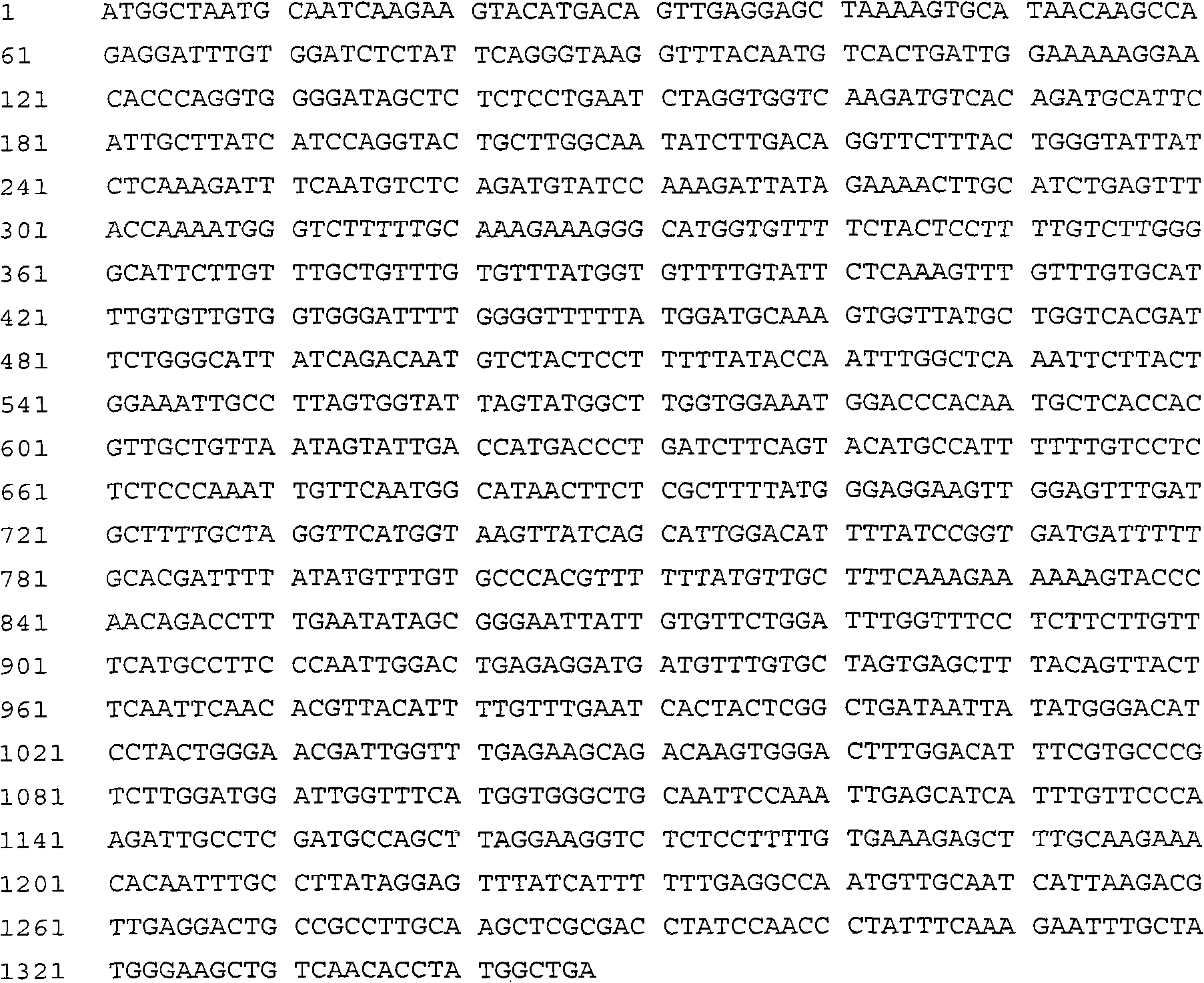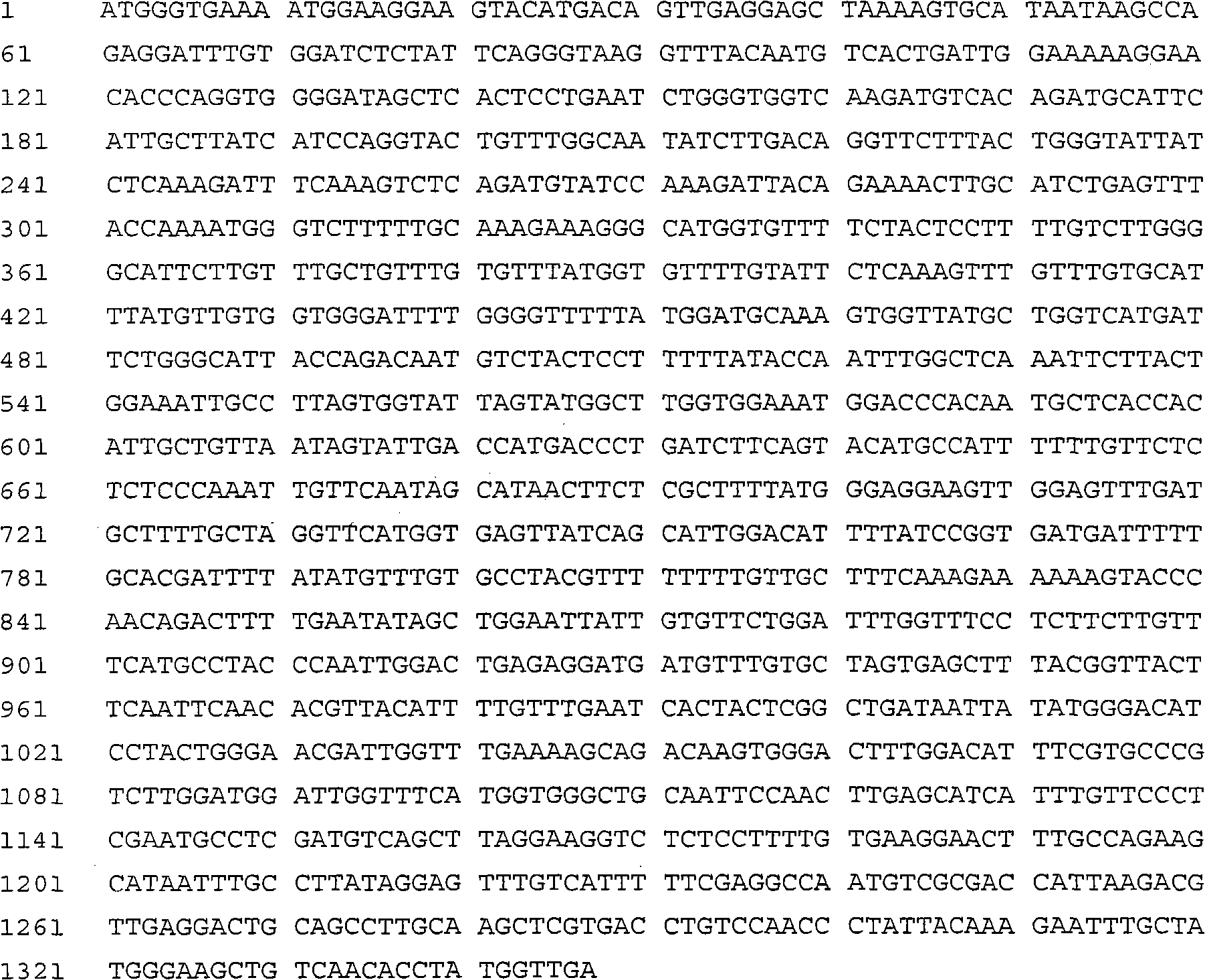Genes having delta 6 fatty acid dehydrogenase function and use thereof
A gene and nucleotide technology, applied to the gene with the function of △6 fatty acid dehydrogenase and its application field, can solve the problems of lack of fishery resources, increase the production cost of PUFAs, limit the utilization of PUFAs, etc.
- Summary
- Abstract
- Description
- Claims
- Application Information
AI Technical Summary
Problems solved by technology
Method used
Image
Examples
Embodiment 1
[0043] Embodiment 1. Obtaining of RnD6C and RnD6D genes
[0044] 1. Preparation of black currant genomic DNA
[0045] Using the live plant of black tea currant (Ribes nigrum L.) grown in Beijing Botanical Garden as the material, take its young leaves (about 100mg), add steel balls (diameter 5mm) into a 7ml Ep tube, and freeze in liquid nitrogen for 20 -30min, high-speed crushing on the vortex machine, repeat the operation 2-3 times until the material is completely crushed. Add 1-2ml of preheated CTAB extract solution (see "Refined Molecular Biology Experiment Guide" 2001, Science Press, translated by Yan Ziying and Wang Hailin), and mix well. 65°C water bath for 30min. Add an equal volume of chloroform, and gently extract for about 5 minutes. Centrifuge at 12000rpm room temperature for 10min. Take the supernatant, add 1 / 2 volume of isopropanol to mix well, and place at room temperature for 10 min to precipitate DNA. The precipitated DNA was picked out with a Tip, washed t...
Embodiment 2
[0063] Embodiment two, the construction of RnD6C, RnD6D gene yeast vector
[0064] From the pGEM-T vector containing the genes RnD6C and RnD6D, use the KpnI and Sac I restriction sites to obtain the RnD6C and RnD6D genes after double cutting, and directionally clone them into the yeast expression vector pYES2 (purchased from Ivitrogen Company) to obtain the yeast expression plasmid pYRnD6C and pYRnD6D were transformed into Escherichia coli DH-5α (preserved by our laboratory) and preserved. Its vector diagram see Figure 5 .
Embodiment 3
[0065] Example 3, Expression of RnD6C and RnD6D genes in yeast
[0066] 1. Transformation of Yeast
[0067] Referring to the method described in Invitrogen's pYES2Kit (Cat#V285-20), the yeast expression plasmids pYRnD6C and pYRnD6D of the above-mentioned chimeric genes were transformed into Saccharomyces cerevisiae auxotrophic strain INV Sc I (purchased from Invitrogen) using lithium acetate. Using the empty pYES2 plasmid as a control, yeast cells containing each expression plasmid were obtained.
[0068] 2. Induced expression in transformed yeast cells
[0069] Get the yeast single colony transformed with the yeast expression plasmid containing the target gene, inoculate it in 50ml SC-U culture medium (refer to the formula described by Invitrogen company pYES2Kit) in the SC-U culture medium containing 2% raffinose, 250rpm, 28 ℃, culture overnight; add NP-40 (purchased from BBI) (final concentration 1%), exogenous linoleic acid and α-linolenic acid substrates (purchased from...
PUM
 Login to View More
Login to View More Abstract
Description
Claims
Application Information
 Login to View More
Login to View More - R&D
- Intellectual Property
- Life Sciences
- Materials
- Tech Scout
- Unparalleled Data Quality
- Higher Quality Content
- 60% Fewer Hallucinations
Browse by: Latest US Patents, China's latest patents, Technical Efficacy Thesaurus, Application Domain, Technology Topic, Popular Technical Reports.
© 2025 PatSnap. All rights reserved.Legal|Privacy policy|Modern Slavery Act Transparency Statement|Sitemap|About US| Contact US: help@patsnap.com



